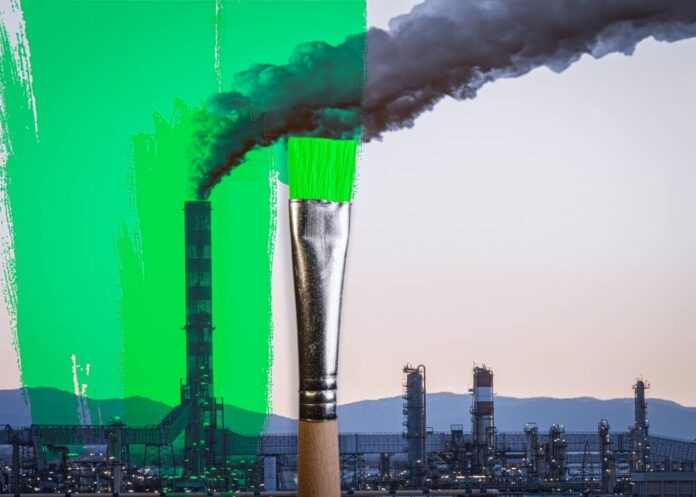Comment AI is consuming more power than ever. Hyperscalers are only now adopting Nvidia’s 120-kW-per-rack system, and the GPU giant has already begun charting a path toward 600-kW designs.
With such a surge in demand, Big Tech’s environmental commitments are beginning to look more like a desperate Hail Mary.
Microsoft has committed to being carbon negative by 2030 and Google has committed itself to a zero-carbon footprint across its entire value chain. Amazon, the e-commerce giant, is taking a longer route, aiming to achieve net-zero emission by 2040.
Sure, these are admirable goals. But, as we’ve already covered, the cloud giants’ greenhouse gas emission continue to rise every year. Microsoft’s CO 2 emission levels have increased by nearly 30 percent in the last year. Amazon’s and Google’s emissions are up 34.5 percent and 48 percent respectively. It’s hard for us to know how much of this is due to the AI boom. These companies don’t break down the datacenter emissions, but it’s difficult to imagine that the tens and thousands of GPUs they have deployed over the last few years didn’t make a significant contribution.
To put this in context, we reported earlier that while datacenters are one of the fastest-growing emissions sources, their share of the total energy sector emissions is expected to be less than 1.5 percent through 2035, according to International Energy Agency. This share is between 300 and 500 megatonnes.
Whether or not you view Big Tech’s eco pledges to the world more as PR than anything else, it is a fact that they made these promises, and promises are broken. In an effort to meet their goals, hyperscalers are increasingly placing their bets on more exotic ways to offset the emissions from their ever-growing empires of datacenters. If you can’t stop, capture
Microsoft signed up for another bundle of carbon credits earlier this month as part of its tie-up with Terradot. Terradot committed to removing 12 000 tons of CO2 from Earth’s atmosphere by 2026-2029 using a process known as enhanced rock weathering. The process was first proposed in the 1990s and involves mineral reactions that sequester atmospheric CO2 in rock. This process occurs naturally over millions of years, forming minerals such as calcium carbonate. Terradot and other startups, however, are aiming to accelerate this process. Terradot, as we understand it
achieves this speed by spreading finely-ground minerals over large swaths. The larger surface area is believed to allow the minerals to react with the carbon absorbed by the rainwater, forming new carbon-rich mineral. This could be an order of magnitude quicker.
This collaboration builds on Microsoft’s earlier carbon capture partnership with 1PointFive for 500,000 metric tonnes of CO2 by 2030, using the direct air capture (DAC), which uses the company’s direct air capture approach to pull carbon out of the air and store in subsurface saltwater reserves.
Microsoft’s carbon capture is not the only hyperscaler. Amazon has been working with 1PointFive since 2023. Google, meanwhile, tapped Startup Holocene to help clean up its act in the 2030s.
The technology is still in its infancy. Climate researchers at MIT wrotethat while the idea behind improved rock weathering may be sound, it has not been proven.
The biggest challenge to ERW is the energy required for mining, grinding and transporting rocks. For ERW to be a net positive, it must absorb more CO2 that it generates.
Some evidence suggests that the best mineral candidates for ERW like Olivine could end up adding CO (19459078) 2 into the atmosphere through secondary reaction with iron. Researchers explain that DAC-based carbon capture faces many of the same challenges, as it is less effective than capturing the carbon at the source. They wrote about it in a blog
“The concentration of CO2 in the air is about 300 times less than in the smokestacks of power plants or industrial plants, making it much less efficient to capture. Because of this, DAC is quite expensive today,” .
Many believe that over time, the cost of DAC will drop, and Google hopes to see DAC reaching $100 per ton in the early 2030s.
However unless hyperscalers increase their carbon capture investments it’s unlikely that they will make a significant impact in terms of their promised reductions. Microsoft’s most recent sustainability reportstated that it had contracted with a company to capture 5,000,000 metric tons of CO2 in 2023 over a period of 15 years. This might sound good until you consider that the Windows maker produced 17.2 million tons of CO2 in fiscal year 2023.
The nuclear industry will eventually see a second revival
Hyperscalers don’t put all their sustainability eggs into a shared carbon capture basket. They are also placing a lot of money in nuclear energy to offset the massive GPU deployments they have made and bail out their carbon-zero and negative targets. These investments can range from behind-the meter deployments in existing power plants to rehabbing old nuclear reactors. They also include moonshot fusion energy promises and small modular reactors.
Microsoft and Amazon are leading two of the more realistic nuclear datacenter projects. You may remember that the ecommerce giant turned cloud giant purchased Cumulus’ atomic datacenters early last year for $650,000,000.
With the acquisition, AWS gained access to 960 megawatts (or a third of the total capacity) of the Susquehanna Nuclear Power Plant. However, since the announcement the cloud provider has encountered some speed bumps regarding how much capacity they can claim.
Microsoft teamed up last summer with Constellation Energy in order to restart Three Mile Island Unit 1, which had been idled, as part of a power purchase agreement lasting 20 years.
TMI Unit 1 was retired in 2008 with a generating power of 837 megawatts. Microsoft is expected to use a large part of this capacity to power their increasingly power-hungry AI Infrastructure. Analysts estimate that the plant could reduce carbon emissions by up to 3 million tons per year in the region. Microsoft was one of the first companies to support small modular reactors, which are tiny nuclear fission power systems that can produce tens or hundreds of megawatts depending on their design. Redmond could install a few of these near new datacenters to reduce their impact on the grid.
Microsoft advertised positions in 2023 for a program director to oversee the deployment and use of SMRs and Microreactors, to power its growing cloud-based and AI businesses.
Since that time, Amazon and Google have announced plans to use SMRs from X-Energy or Kairos Power. Larry Ellison, the CEO of Oracle, is also in on this fun. Last year he announced plans to deploy three SMRs to power a gigawatt AI datacenter.
If the idea of thousands atomic power plants scattered across the countryside seems far-fetched to you, SMRs aren’t the most bizarre nuclear-themed hedge hyperscalers made in recent years.
In 2023, Redmond signed up for a fusion startup Helion Energy backed by Sam Altman, which promised that it would begin delivering helium-3 based power around 2028. Helion hasn’t yet figured out the power part of the equation, nearly two years after signing up.
In 2023, when we spoke to them, they assured us that their latest-generation reactor would begin producing power in 2024. As of January, the startup reactor has not produced a significant number of electrons or the promised 50 megawatts.
- Microsoft is tempted to use gas to keep up with AI.
- Pennsylvania’s once leading coal power plant could be revived as a 4.5GW gas powered AI campus.
- AI Datacenters want to go nuclear. It’s too bad they needed it today
- Datacenters are at record lows due to power shortages
Herein lies the problem. While fusion and SMRs may be a long term solution to hyperscalers unrelenting demand for energy, the technology still has a ways to go before it is a viable alternative, say to fossil fuels.
Three Mile Island’s fission reactor Unit One is not expected to be fully functional until 2028. If things continue as they are, it may only be able to meet the energy needs of modern GPU-bit farms.
According to different sources, large-scale deployments for small modular reactors are not expected until the mid-2030s or late 2020s. Google’s SMR provider doesn’t expect a fission reactor to be operational until at least 2030 while Amazon and X-Energy look at 2039.
Even with the SMRs, the economics remain a concern. Some argue that this technology is “too expensive, too slow to build, and too risky to play a significant role in transitioning away from fossil fuels.”
Renewables don’t cut it:
As the cloud giants await the second renaissance of the power of atom, they continue to pour considerable capital into solar and winds energy.
Amazon signed 870 megawatts in wind and solar power agreements in Spain last month. Microsoft, meanwhile, signed a PPA for 389 megawatts in solar power in the US in February. Google, on the other hand, celebrated 2024 by forming an alliance to build industrial parks powered with clean energy. This was presumably to have a guilt-free location to place its datacenters.
Wind and solar are not suited to powering a facility that requires tens, hundred or thousands of megawatts all the time. In the best case scenario, peak power is only generated during daylight hours, and wind when… well, it’s blowing. The big batteries that you see in the media are there to store excess power until needed.
Google is also augmenting its power supply with geothermal. The plant, developed by Fervo Energy is expected to produce up to 115MW when completed, which was a lot of power three years ago but doesn’t raise eyebrows today. What can be done if solar and wind are not enough, and nuclear fusion is still years away? The AI bubble is still intact, so the strategy seems simple, but not sustainable. “Burn baby burn.”
Microsoft said at the CERAWeek Global Energy Conference in Houston last month that it was not above deploying natural gas plants to meet their energy needs. Microsoft has funded plans for generation in places with limited power, like Dublin, where they operate a 170 Megawatt gas plant. Facebook’s parent Meta,
has also embraced natural gas to fuel its AI model development. The company’s upcoming datacenter campus in Louisiana is powered by a 2.2 gigawatt new natural gas plant. Developers in Pennsylvania announced plans to convert an old coal plant into a datacenter campus powered by natural gas.
It’s enough to say that, given the option of sticking with their sustainability goal or leading the AI racing, we know what we’ll bet on. (r)


